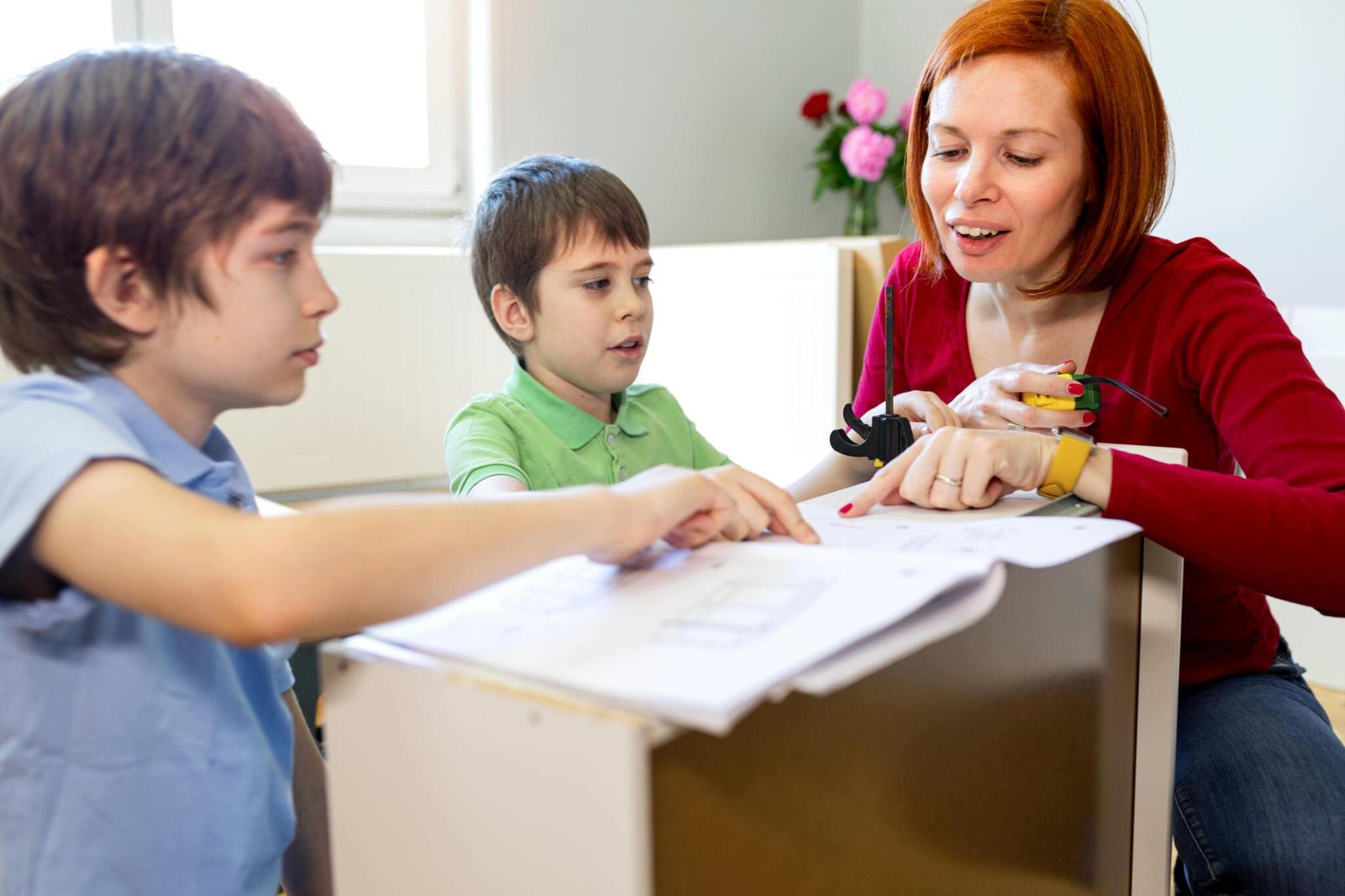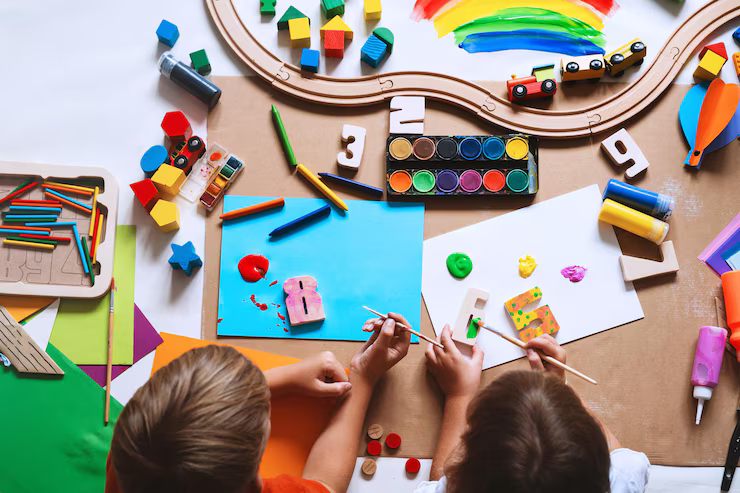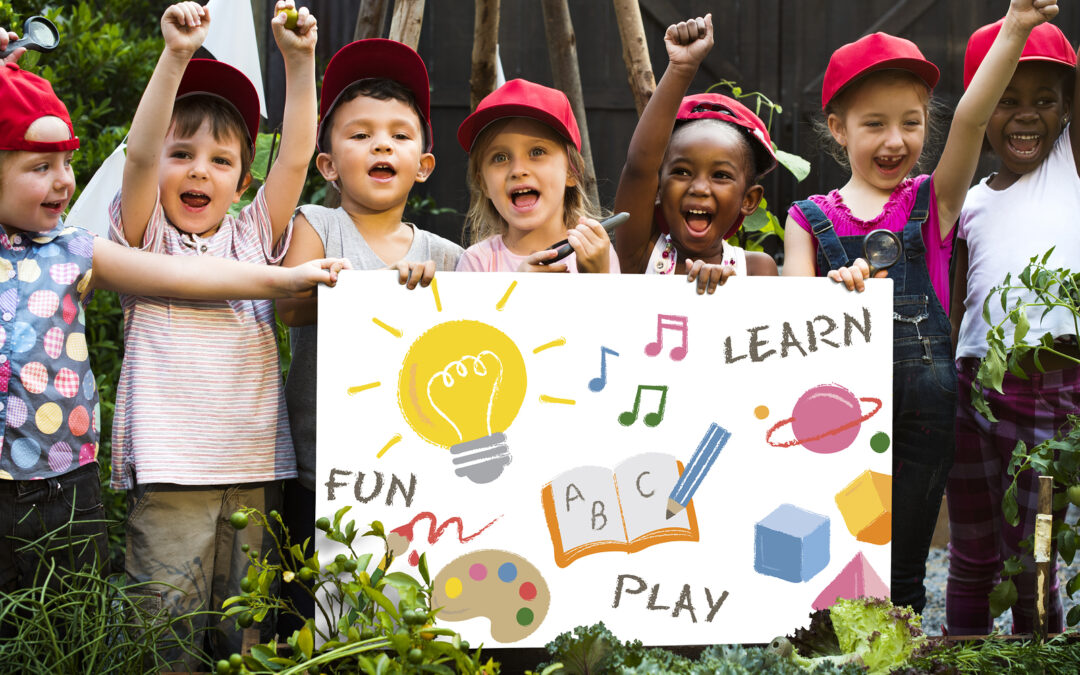Understanding the Needs of Dual Language Learners
At Amici Montessori, we understand the unique challenges and incredible benefits of nurturing dual language learners. These young students are navigating the complexities of learning two languages simultaneously, which can enhance their cognitive abilities and cultural awareness.
However, without the right support, they might face difficulties in keeping up with their peers. This blog aims to provide teaching strategies early childhood educators can use to effectively support dual language learners in the classroom, ensuring their educational journey is both enriching and enjoyable.
Create a Welcoming and Inclusive Environment
A welcoming and inclusive environment is fundamental for the success of dual language learners. When students feel safe and valued, they are more likely to participate and engage in classroom activities. Here are some ways to create such an environment at Amici Montessori:
- Celebrate Cultural Diversity: Display posters, books, and artifacts from various cultures represented in your classroom. This not only makes dual language learners feel included but also educates other students about different cultures.
- Learn Basic Phrases in Students’ Native Languages: Even simple greetings or common classroom commands in the students’ native languages can go a long way in making them feel understood and respected.
- Create a Safe Space for Mistakes: Encourage students to take risks with their language learning. Praise their efforts and gently correct mistakes to foster a positive learning environment.
By implementing these strategies, educators at Amici Montessori can help dual language learners feel more at home and ready to take on new challenges.
Incorporate Visual Aids and Multimedia Resources
Visual aids and multimedia resources are powerful tools in a dual-language classroom. They can bridge the gap between languages and make complex concepts more accessible. At Amici Montessori, we can enhance learning by integrating the following resources:
- Visual Schedules and Labels: Use pictures alongside words on classroom schedules and labels. This helps dual language learners understand routines and the names of objects in both languages.
- Interactive Whiteboards: Utilize interactive whiteboards to display videos, images, and educational games that support dual language learners’ activities.
- Storytelling with Pictures: Read bilingual books that include vivid illustrations. Discuss the pictures and ask students to describe them in both languages.
These resources not only support dual language learners but also make the learning process more engaging and enjoyable for all students.
Use Bilingual Books and Materials
Providing bilingual lesson plans and materials can significantly benefit dual language learners. At Amici Montessori, our goal is to create a rich, supportive environment where every student thrives. Here’s how bilingual resources can help:
- Access to Content in Both Languages: Bilingual books allow students to see and hear the same content in both languages, reinforcing their understanding.
- Language Comparisons: Encourage students to compare words and sentence structures between the two languages. This can deepen their understanding and appreciation of both languages.
- Parental Involvement: Send home bilingual books for parents to read with their children. This encourages family involvement and supports language learning outside the classroom.
By incorporating bilingual strategies into our curriculum, we can ensure that our dual language learners have the tools they need to succeed academically and socially.
Encourage Peer Support and Interaction
Peer support and interaction are crucial for the development of dual language learners. At Amici Montessori, fostering a collaborative learning environment can help students practice their language skills in a natural setting. Consider the following strategies:
- Peer Tutoring: Pair dual language learners with bilingual peers who can provide support and model language use.
- Group Activities: Organize activities that require collaboration, such as projects or games, encouraging students to communicate in both languages.
- Language Buddies: Assign language buddies who can help each other with homework and classroom tasks, reinforcing their learning.
These interactions not only improve language skills but also build social connections and confidence among students.
Implement Consistent and Clear Routines
Consistency and clarity in classroom routines are essential for dual language learners. At Amici Montessori, we emphasize the importance of predictable routines to help students feel secure and focused. Here’s how to implement effective routines:
- Daily Schedules: Use visual schedules that include pictures and words in both languages. This helps students understand and anticipate the flow of the day.
- Clear Instructions: Provide clear, simple instructions and repeat them in both languages. Use gestures and visual aids to reinforce understanding.
- Routine Check-ins: Regularly check in with dual language learners to ensure they understand the routines and feel comfortable.
By maintaining consistent routines, we can create a stable and supportive learning environment that allows dual language learners to thrive.
Provide Scaffolding and Differentiated Instruction
Differentiated instruction and scaffolding are key to meeting the diverse needs of dual language learners. At Amici Montessori, we tailor our teaching methods to support each student’s unique learning journey. Here are some effective techniques:
- Language Scaffolding: Break down complex tasks into smaller, manageable steps. Use visual aids, gestures, and simplified language to support understanding.
- Differentiated Activities: Design activities that cater to different proficiency levels. For example, advanced students might engage in writing exercises, while beginners focus on vocabulary building.
- Regular Feedback: Provide immediate and constructive feedback. Highlight strengths and gently guide students on areas for improvement.
These methods ensure that all dual language learners receive the support they need to progress and succeed.
Foster Family and Community Involvement
Involving families and the community in the education of dual language learners can significantly enhance their learning experience. At Amici Montessori, we strive to build strong connections between school and home. Here’s how:
- Bilingual Newsletters: Send home newsletters in both languages to keep families informed about classroom activities and how they can support their children’s learning.
- Community Events: Organize events that celebrate cultural diversity and encourage family participation, such as international potlucks or cultural fairs.
- Parent Workshops: Offer workshops for parents on how to support dual language learners at home. Provide resources and strategies they can use.
By fostering family and community involvement, we create a supportive network that extends beyond the classroom, benefiting students in their language learning journey.
Utilize Technology to Enhance Language Skills

Technology can be a powerful ally in supporting dual language learners. At Amici Montessori, we integrate various technological tools to enhance language learning. Here are some effective ways to use technology:
- Educational Apps: Use apps designed for dual language learners that offer interactive language games and exercises.
- Online Resources: Provide access to websites with bilingual content and educational videos that reinforce classroom learning.
- Digital Storytelling: Encourage students to create digital stories using multimedia tools. This can help them creatively practice both languages.
By incorporating technology, we can offer dual language learners additional avenues to practice and improve their language skills in an engaging and modern way.
Assess Progress and Adapt Teaching Methods
Regular assessment and adaptation of teaching methods are crucial for the success of dual language learners. At Amici Montessori, we continuously monitor student progress and adjust our strategies accordingly. Here’s how to effectively assess and adapt:
- Frequent Assessments: Conduct regular assessments to gauge students’ language proficiency and comprehension. Use a variety of formats, such as quizzes, oral presentations, and written assignments.
- Personalized Feedback: Provide personalized feedback that highlights strengths and areas for improvement. Use this feedback to tailor future lessons to individual needs.
- Flexible Teaching Methods: Be open to changing your teaching approach based on assessment results. Incorporate new language learning strategies and resources as needed.
By continuously assessing and adapting, we can ensure that dual language learners receive the support they need to succeed.
Conclusion: The Path to Success for Dual Language Learners
At Amici Montessori, we are committed to supporting dual language learners through effective and proven strategies. By creating an inclusive environment, incorporating visual aids, using bilingual materials, encouraging peer support, implementing consistent routines, providing differentiated instruction, fostering family involvement, utilizing technology, and regularly assessing progress, we can ensure that every dual language learner thrives.
Amici Montessori is dedicated to nurturing the potential of every student. By embracing these strategies, we create a learning environment where dual-language learners can excel academically and socially. Visit our website to learn more about our programs and how we support young dual language learners. Together, we can make a difference in their educational journey.











